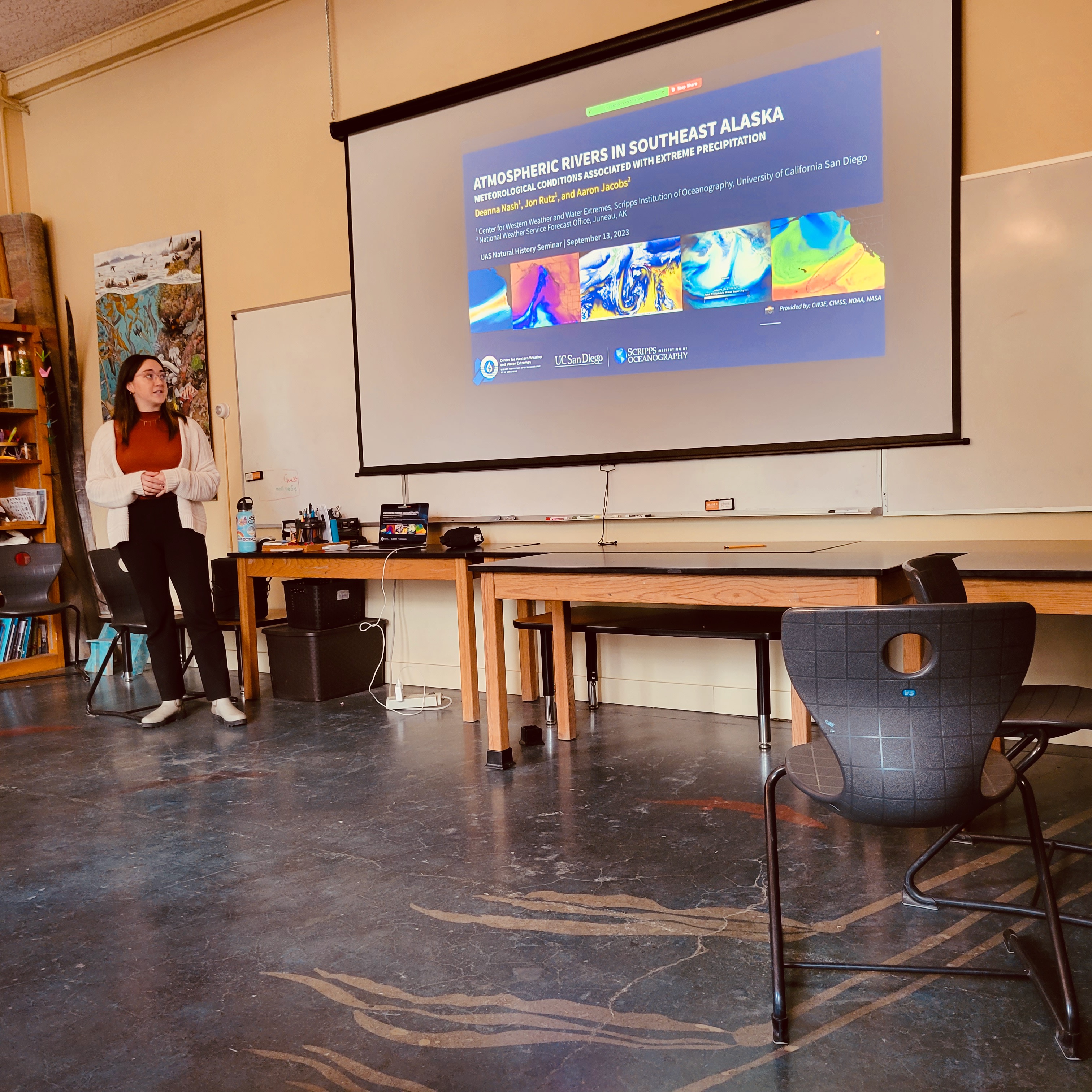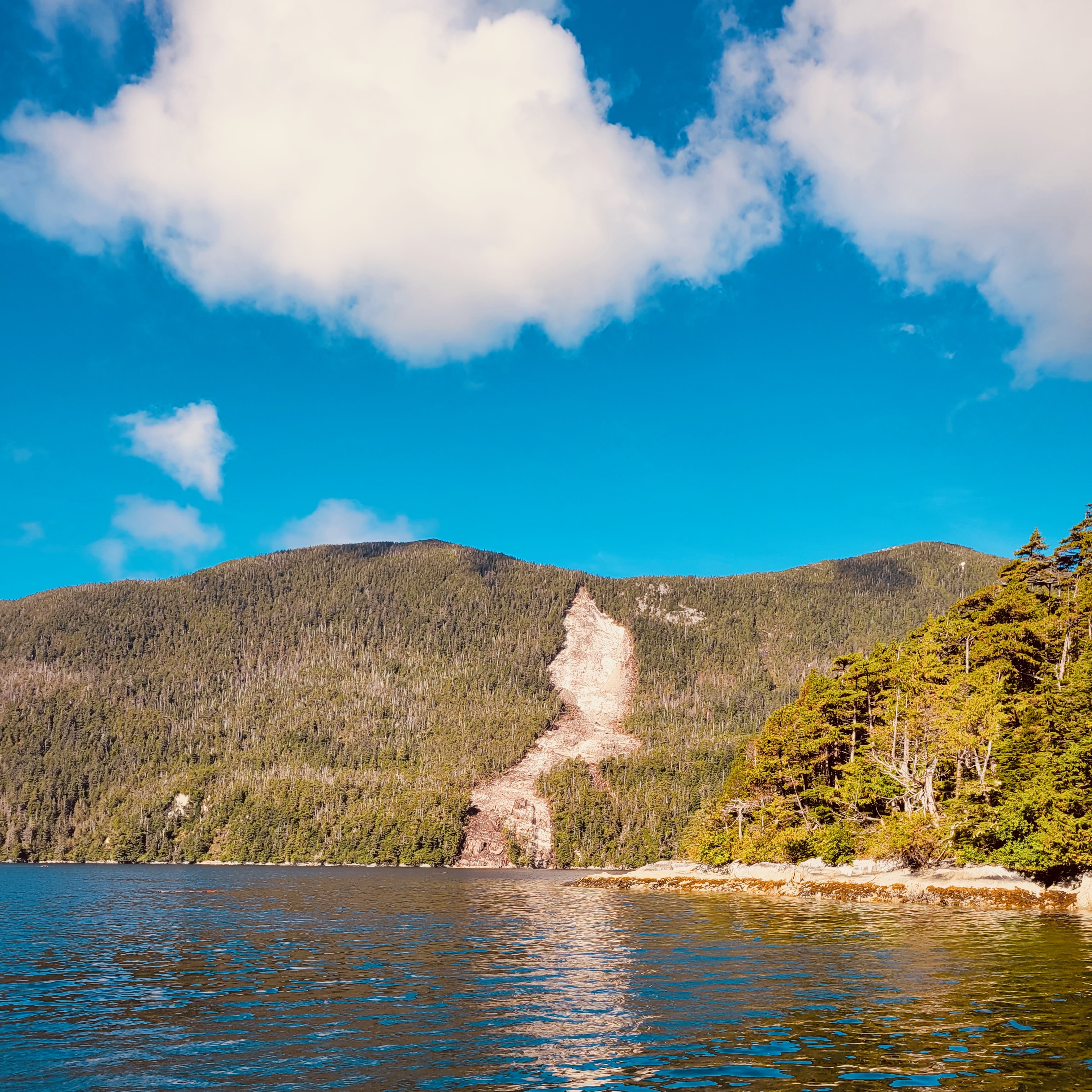
About
Increased frequency of extreme precipitation events in Southeast Alaska are threatening the stability of infrastructure, while disrupting food security and the safety of the Alaska Native and rural communities. While we know that the majority of extreme precipitation events that reach these communities are associated with Atmospheric Rivers (ARs), the atmospheric conditions associated with historic landslides, floods, and avalanches are unclear. As a part of the National Science Foundation Coastlines and Peoples initiative, the research project is called "Kutí", which is the Tlingit (indigenous peoples of Southeast Alaska) word for weather. The goal of the project is to develop natural hazard monitoring and warning systems in collaboration with Tribal entities in six rural and indigenous communities across Southeast Alaska. In order to reach this goal, atmospheric scientists will be working alongside National Weather Service Juneau forecasters to focus on three objectives:
- Assess meteorological characteristics of extreme precipitation events in Southeast Alaska.
- Enhance predictive skill for hazardous events through case study analysis and differentiation between low- and high-impact events.
- Evaluate the change in frequency of atmospheric characteristics conducive to natural hazards using downscaled climate information.
The Tlingit people have been indigenous to this land for over 10,000 years. Gunalchéesh to the Tlingit people for their stewardship of Tlingit Aani since time immemorial and today.
Products
The Center for Western Weather and Water Extremes (CW3E) develops prototype techniques to improve atmospheric river-related extreme event predictions and projections.
Publications
Nash, Deanna, Rutz, J.J., and Jacobs, A. (2024). “Atmospheric Rivers in Southeast Alaska: Meteorological Conditions Associated with Extreme Precipitation”. Journal of Geophysical Research: Atmospheres, 129, e2023JD039294. https://doi.org/10.1029/2023JD039294
Nash, Deanna, Rutz, J.J., and Jacobs, A. (2024). “Differentiating between impactful and non-impactful Atmospheric River events in Southeast Alaska”. Journal of Operational Meteorology, (in preparation)
Scientist in Residency Fellowship
The Sitka Sound Science Center hosts early-career scientists from around the globe for mini-sabbaticals in Sitka, AK with coordination of community engagement opportunities. I am so grateful to have had the opportunity to spend all of September 2023 in Sitka, becoming an honorary member of the community, experiencing some of their incredible atmospheric rivers, and engaging the community in learning more about atmospheric rivers in Southeast Alaska.
While I was in Sitka, I was able to go visit the site of a recent landslide that was triggered during the August 12, 2023 atmospheric river. I was accompanied on this visit by a hydrologist and multiple geologists and we took the opportunity to collaboratively discuss the event from multiple perspectives. During my first week, I was introduced to the community during The Morning Interview with KCAW Raven Radio. The following week, it was my honor to kick off the 18th year of Natural History Seminars, hosted by Kitty LaBounty in partnership with the University of Alaska Southeast. I presented on Atmospheric Rivers in Southeast Alaska, followed by an invigorating Q&A session. The third week I was there, I hosted a "Weather Walk & Talk with a Scientist" as we hiked with community members to Heart and Blue Lake. We discussed local weather patterns, extreme precipitation, and how to ID clouds. In my final week, I was able to join one of the middle school teachers in planning their Weather and Climate Unit for the spring.
Gunalchéesh (thank you) to everyone who welcomed me during my time in the beautiful community of Sitka, AK.
To learn about my SIRF on Prince of Wales, Alaska in July 2025, click here


